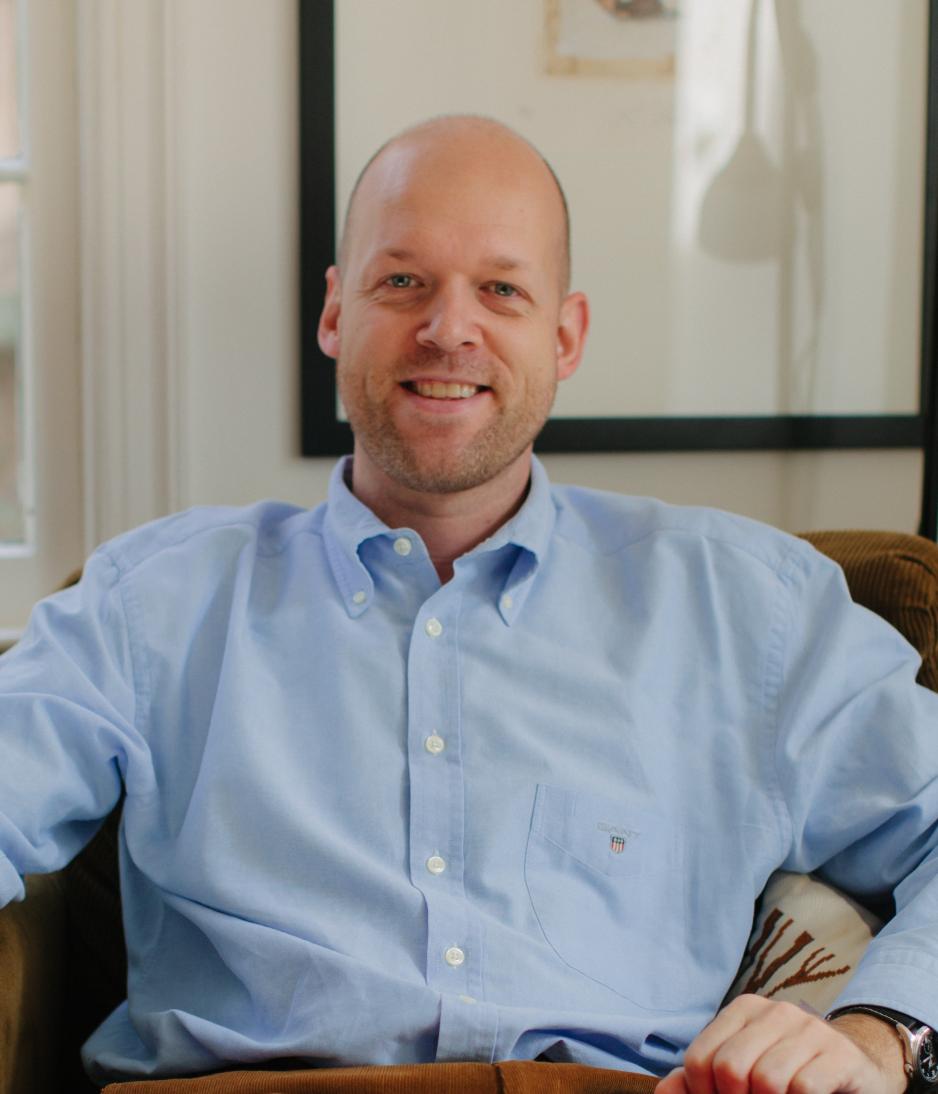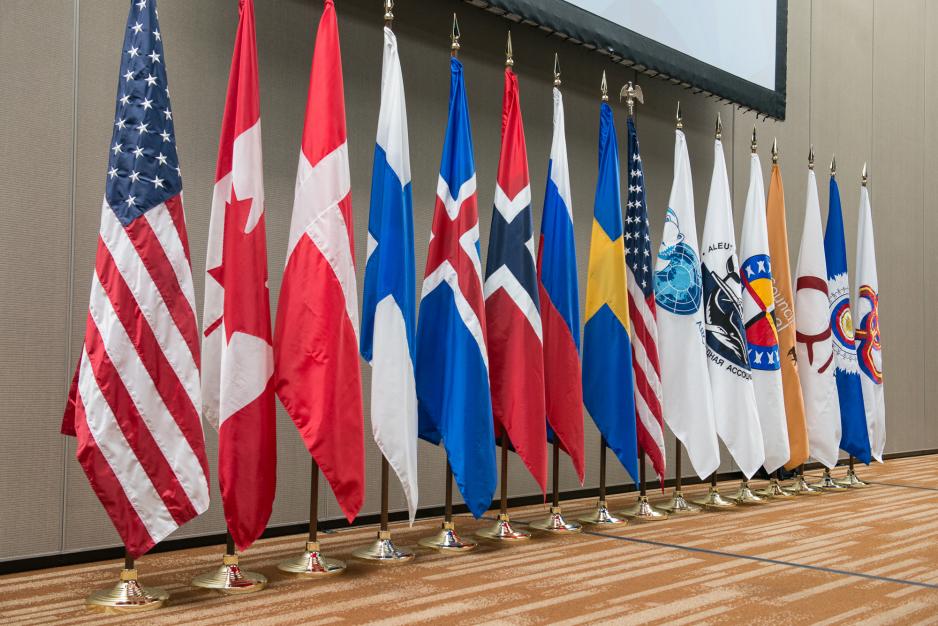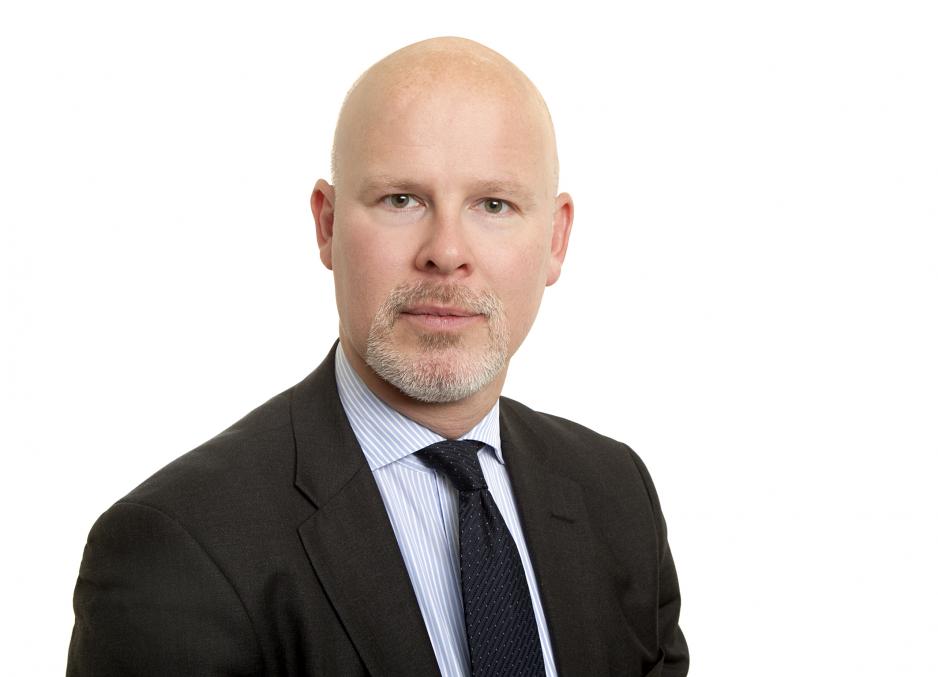New Strategy to Invigorate the Arctic Council

Tommy Flakk, Senior Advisor at the [Norwegian] Ministry of Foreign Affairs’ High North desk is one of the persons negotiating on behalf of Norway when the new Arctic Council strategy is to be formed. (Photo: Rebecca M. Zeller)
For the first time since the establishing of the Arctic Council in 1996, work is going on to develop a unique strategy for this international high-level forum. The strategy intends to increase the Council’s planning and implementation capacity, and the plan is for it to be finalized by the time the Arctic foreign ministers meet in May.
Finland assumed the rotating Chair of the Arctic Council in the spring of 2017, following an American two-year term.
In a few months, Iceland will take over leadership of the intergovernmental body that is described by the Norwegian foreign ministry as the most important cooperation forum for the eight Arctic states.
- Groundbreaking work
- The most important work at the Council right now is the developing of a new strategy. For the first time since its establishing, a strategic plan for the Council’s work will be prepared. This is groundbreaking work, states Senior Advisor Tommy Flakk at the Norwegian MFA’s High North desk.
When the Arctic Council was established more than 20 years ago, based on the Ottawa Declaration signed in Canada, the goal of the Council was to promote cooperation and coordination among the Arctic states.
The declaration also covered inclusion of the Arctic indigenous peoples and the inhabitants of the High North, in particular on shared issues such as environmental protection and sustainable development.
Will sharpen priorities
While the Council’s strategy is now to be sharpened and clarified, it nevertheless still rests on the old declaration that the countries negotiated at its establishing.
- The new strategy will be a kind of upgrading of the Ottawa Declaration, the MFA Senior Advisor explains to High North News.
- The new strategy is to give a direction for the Council’s further work and it will be very important in the Council’s future work, Flakk says.

The flags of the eight permanent members of the Arctic Council as well as the six indigenous peoples that are permanent representatives of the Council. (Photo: Arctic Council Secretariat/Linnea Nordström)
Growing interest
The MFA Senior Advisor is one of the people currently negotiating on Norway’s behalf.
When asked what will be new in the strategy, he says there will be an attempt to continue the spirit of the Kiruna Vision (from the Swedish chairmanship period in 2013, journ.note).
- It says more about what the Arctic Council is and does; however, it is also an attempt to provide some guiding signals for the coming years. The Council has grown, new members have been added and there is also a larger general interest in the Arctic now than before.
- The number of projects in the working groups has increased too, currently counting more than 100. The question now is how to prioritize among the most important projects. A good strategy is needed in order to do so, and that is why there are current attempts to increase the implementing capacities of the Council, he adds.
The working groups for environmental protection and climate are currently receiving most attention.
Norway prioritises people and economy
- The Arctic Council has delivered on environment. However, there are also many in Norway who will argue that the Council should prioritise social and economic development for people in the High North. This is a priority for Norway and Russia, while other countries argue that this should be less emphasized, Flakk says.
One of the challenges in developing a new strategy is the differences between the Council’s various member states, which may vary significantly.
Whereas the Nordic countries share several features, there are others – for instance the Arctic parts of Canada or Alaska – that differ quite significantly from Scandinavia. The Council member states also all have their own interests that they want to promote or defend, in addition to the joint emphasis on shared initiatives.
All Council decisions have to be unanimous, i.e. everyone have to agree.
- It takes only one country to disagree for the entire decision to fall, Flakk reminds us.
Smooth process – so far
- I don’t know where the work on the strategy stands at present, however, it has been a smooth process so far. If there are any disagreements, I suspect they will only appear towards the end of the work process, says Marti Ruokolainen, Information Manager at the Finnish Ministry of Foreign Affairs, to High North News.
The transferring of the chairmanship from Finland to Iceland will take place during the ministerial meeting in Rovaniemi on the 6th and 7th of May.
- Finland will probably present a summary of its chairmanship in early May, Ruokolainen adds.
You can read more about the Finnish chairmanship program here.
It appears to have been rather quiet around the Arctic Council recently, at least if judging by running news as well as social media managed by the Council.
- It may appear quiet, that’s true. But that is probably due to all that is currently going on at the Council being aimed at the ministerial meeting in May. There are many deliveries with deadline before that, and the working groups are working hard to finish on time, says Tommy Flakk of the Norwegian MFA.
More activity in spring
Each of the Arctic Council working groups meets regularly and has several on-going projects at any given time, themes spanning from environmental monitoring (AMAP) to sustainable development (SDWG) as well as emergency response programs (EPPR).
The current focus for most of the groups is to finalize as much as possible before a final plenary meeting takes place in March, organized by the Finns. At this event, the so-called SAO’s (Senior Arctic Officials), foreign policy bureaucrats holding a special responsibility for Arctic cooperation, meet in Ruka.
More activity and attention to the Council is expected during the spring and in the lead-up to the ministerial meeting, when much of the current processes are finalised.
However, as Flakk says, it also depends on what happens in the near future.
Good mood on the top level
- What is the mood like on top level? Are there e.g. meetings between Russia and the USA?
- The mood is good, which is not a given, says Flakk, just like his top-level boss Ine Eriksen Søreide, the [Norwegian] Minister of Foreign Affairs. During the High North conference Arctic Frontiers in Tromsø, Norway recently, she made a point of highlighting the same.
In the words of Senior Advisor Flakk, the Arctic Council is first and foremost a foreign minister forum, not an organization.
When the foreign ministers convene in May, it has been two years since their previous Arctic Council ministerial meeting. The SAO’s meet between the ministerial meetings, and there has been good cooperation amongst them in the past few years, Flakk says.
- The American SAO is actually the one holding the longest-lasting office. Vladimir Barbin (the Russian SAO), on the other hand, is now out because he was appointed Russian Ambassador to Denmark, Flakk adds.
Praising Finland
- What do you think about the Finnish efforts so far in this chairmanship period?
- I think Finland has presented an outstanding example. They have taken a series of good grips, such as focusing on economic development and inviting the Arctic Economic Council to the SAO meetings. That is an innovative feat. Finland has also developed cooperation with the Council’s many observers; not just states, but also organizations.
The Senior Advisor adds that Finland has done a tremendous job when it comes to broadband, for communities and people in the Arctic to have sufficient and reliable connectivity.
When the Office of the Auditor General looked into Norwegian authorities’ work through the Arctic Council, there was criticism that the organizing of the Council was not expedient and that its governing of its work was found wanting.
- Recommendations must be followed up
- From the Norwegian side, it is important that we do something about this, Flakk says, referring to the Auditor General’s criticism from a few years back.
- When an Arctic Council recommendation is presented, it is important that we follow up and do something about it. If not, it reflects poorly on both the Council as well as its member states, Flakk says.
The implementation of the advice provided will thus be an important part of future work, and following up the various issues will therefore be more significant than potentially doing something about the structure of the Council, he says.

Audun Halvorsen (Con), State Secretary at the [Norwegian] Ministry of Foreign Affairs. (Photo: The Norwegian Ministry of Foreign Affairs)
When HNN asks MFA State Secretary Audun Halvorsen (Conservatives) about how important the Norwegian authorities consider the Council to be, at a time when the political situation is still rather tense, he says:
- The Arctic is a region characterized by stability and good international cooperation, based on public international law. This is not a given, but a result stemming from political choices and targeted work from the Arctic states.
State Secretary: - Very important
- To Norway, the work carried out in the Arctic Council as well as in the Barents cooperation, is very important. The Arctic Council is the only political cooperation body on government level between the eight Arctic states, and it is clearly the most important cooperation body in the North.
- Do you still consider the Council a good arena for international dialogue?
- The Arctic Council serves two goals. Firstly, the Council works on specific issues like environment, climate and emergency preparedness. In that way, the Arctic Council contributes to promoting international cooperation on cross-border challenges that no country can solve on its own. Secondly, the Council serves as an important meeting place for the countries in the region. In this way, the Council constitutes a key arena for international dialogue, which contributes to building confidence for peace and stability in the region, the State Secretary says.
Halvorsen’s colleague Tommy Flakk emphasizes the same:
- The Council holds an important function as a facilitator of confidence building, and as a plat form for communication and cooperation. It is important that we manage to maintain it as the premier cooperation forum for the eight Arctic states. It is, after all, the only forum that includes all the Arctic states as well as its indigenous peoples.
Facts
The Arctic Council is an intergovernmental body for cooperation about issues related to challenges the countries in the Arctic face. The purpose of the forum is to promote sustainable development when it comes to environment, social conditions and economy.
The Council’s Secretariat has been permanently established in Tromsø, Norway since 2013.
The Arctic Council was officially established in 1996, when the member state foreign ministers met in Ottawa, Canada and adopted the Ottawa Declaration about cooperation in the Arctic.
The member states are Canada, Denmark with the Faroe Islands and Greenland, Finland, Iceland, Norway, Russia, Sweden and the USA. The Council further holds six international indigenous people’s organizations among its permanent participants.
A series of non-Arctic states, international organizations and NGOs hold observer status at the Arctic Council.
This article originally appeared in Norwegian and has been translated by HNN's Elisabeth Bergquist.

